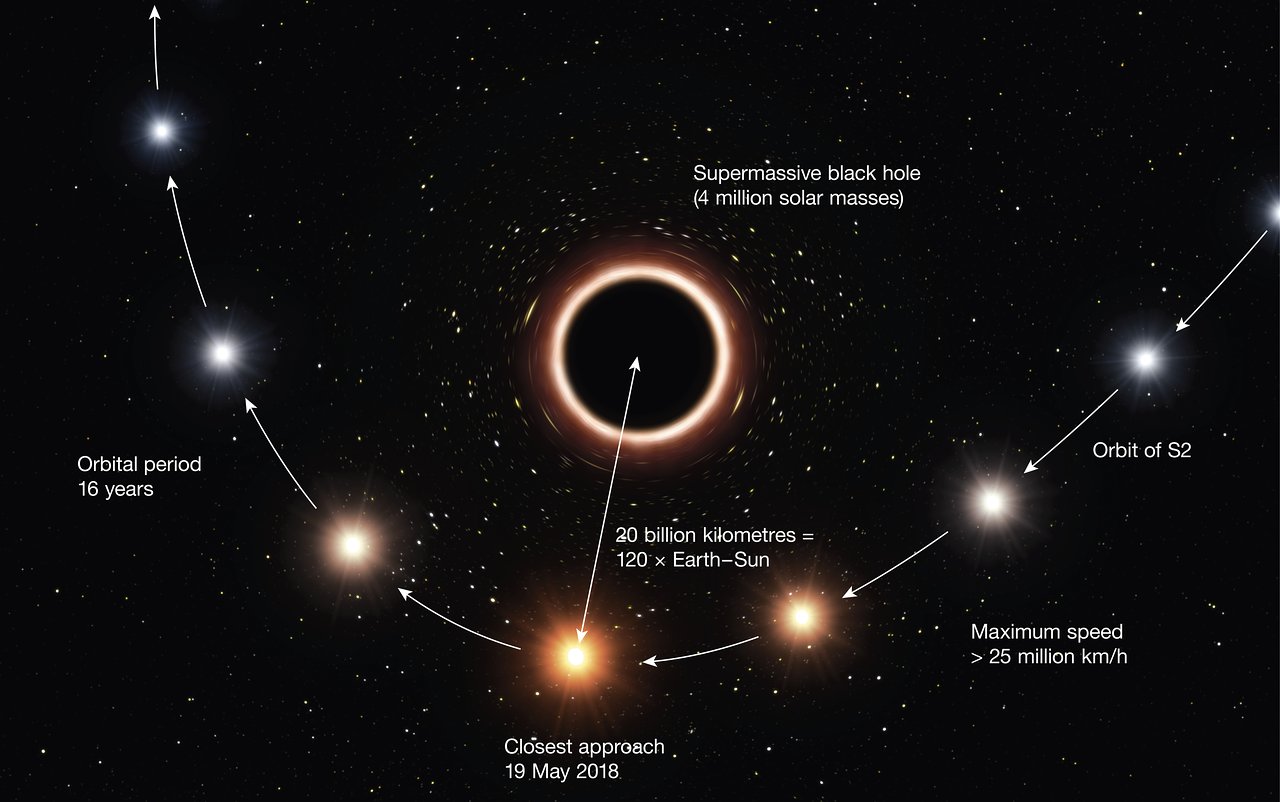Gravity Science
The GRAVITY instrument was built for a large range of science cases, covering star formation, stellar evolution, the galactic centre, active galactic nuclei and more.
At the Institute of Physics I we have had particular interest in the observations of the galactic centre, along with the groups other work in this field.
The outstanding angular resolution of GRAVITY has allowed the consortium to perform two experiments on objects near the supermassive black hole at the centre of the galaxy.
In the first, the orbit of one of the closet known stars to the supermassive black hole was monitored with GRAVITY as it passed through its closet approach. Combining these detailed orbital measurements with spectroscopic data allowed us to confirm that we had observed the effects of gravitational redshift on the star, one of the predictions of Einstein's theory of General Relativity. For further information see the ESO press release.
In the second, a series of flares was observed from very close to the black hole, these allowed us to confirm that the material in the flares was very close to the last stable orbit around the black hole, moving at speeds of at least 30% the speed of light. For further information see the ESO press release.

